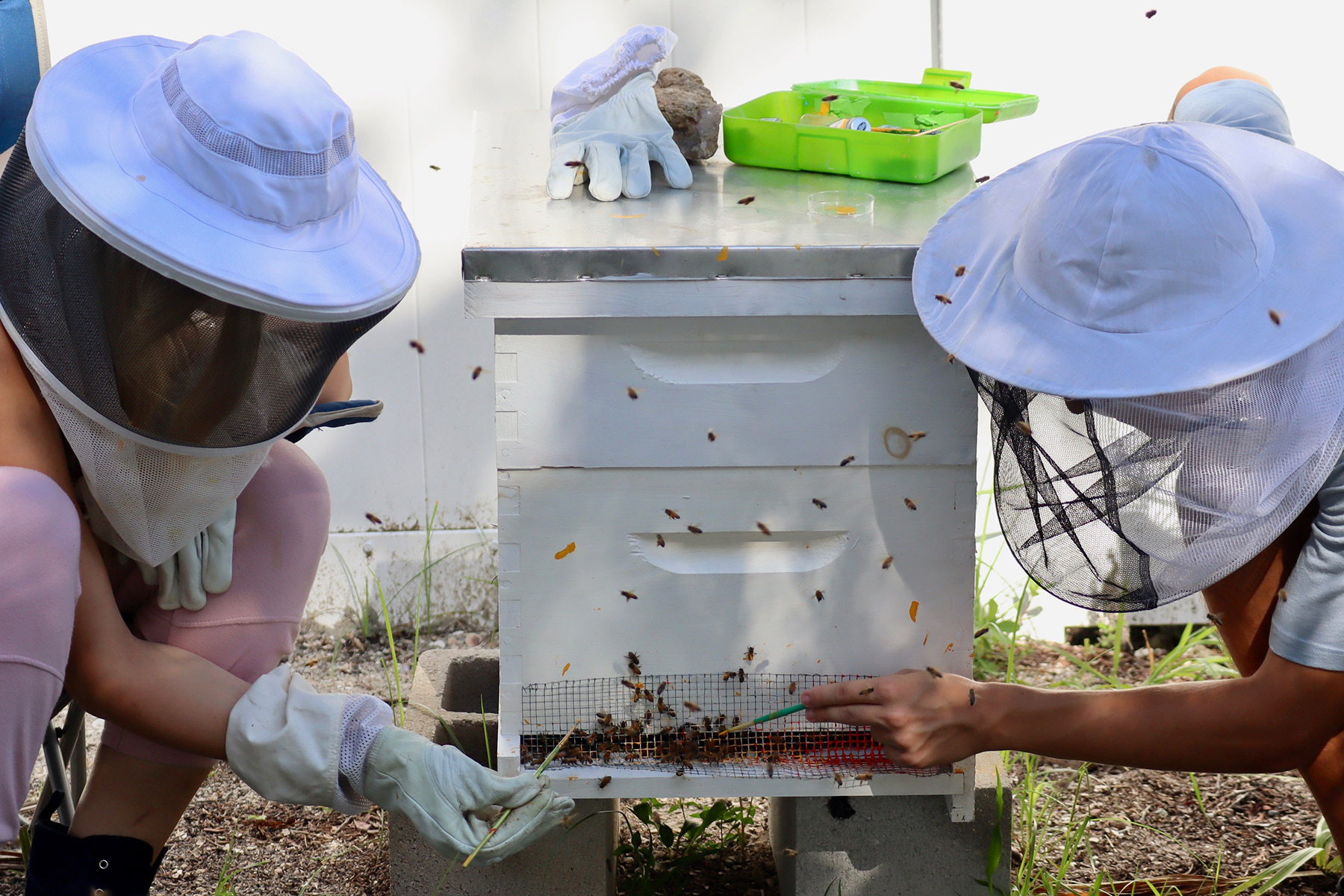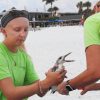Hugh Kuffner had signed up for a beekeeping club in his first year of high school to get outside more. At the opening meeting, he found out he was the only member—and he was responsible for three established hives.
The experience didn’t scare him off. Now he has helped to re-establish the Beekeeping Club in his first year at Eckerd College.
After years of other students’ attempts, Hugh cleared multiple hurdles to convince administrators that the dangers they were worried about weren’t anything to worry about. “My high school had seven [hives] less than 200 feet from the playground where 4-year-olds were playing, and we had no stinging incidents,” says the Prospect, Kentucky, native. “So it is safe.”
Hugh hopes to eventually have around three well-established beehives on campus. But the club started humbly this spring.
They anticipate receiving a split of three honeycomb frames from neurology researcher and Eckerd College Assistant Professor of Biology Scott Dobrin’s hive. “We are late in the season,” Hugh says. “And three frames with no queen is fairly weak. It’s Florida. And hot. So surviving the winter isn’t as difficult as up north. So I’m not too worried about it. And if we feed them and supplement their growth, it will be fine.”
Despite the rough start, Hugh is ecstatic to recharter the club, believing the bees are worth it. “They are absolutely fascinating, lovely little critters,” he explains. “So scientific, precise and beautiful. It’s fascinating. I would recommend it to anyone and everyone. And I like helping others learn about it. This is why the club is fun, because you get to spread it to more people.”
A good deal of science goes into producing an American beehive.

Hugh Kuffner ’27
Though it may seem like just a box, 10 frames are placed inside—each a certain, and perfect, distance apart. Nothing can be out of place, because if anything is incorrect, the bees won’t produce honey.
The bees build up wax until the entire frame is filled. They then combine water and nectar and fan their wings, slowly evaporating the water. Once exactly 82% of the water evaporates—bees are very precise—they will seal this new honey off and leave it. “The stuff that has taken humans centuries to discover, refine and figure out, bees are just evolved to do that. And they do it perfectly,” Hugh says with excitement.
The bee species used most in beekeeping is the European honeybee, originally from Italy. Though it’s perfect for beekeeping because of its mild temperament, Hugh worries about how the introduction of this entirely new species into their habitat will impact the native bee populations.
Other beekeepers have found there is no competition between different species.
But Hugh wasn’t comfortable with that assumption, saying, “I wasn’t really satisfied with just not doing anything. So the club is going to try and spend the majority of the year working on supporting native bee populations.”
Once a beehive is established, not much time is required to keep the bees thriving. A weekly check-in is normally perfect. So most of the Beekeeping Club’s time will be devoted to working with the bees already on campus.
“I love nature and being outside … the sound of walking up to a beehive,” Hugh says. “You know, it’s loud and busy. And then you smoke when it gets quiet. You open the beehive and see everything that is going on. It’s just magical.”













